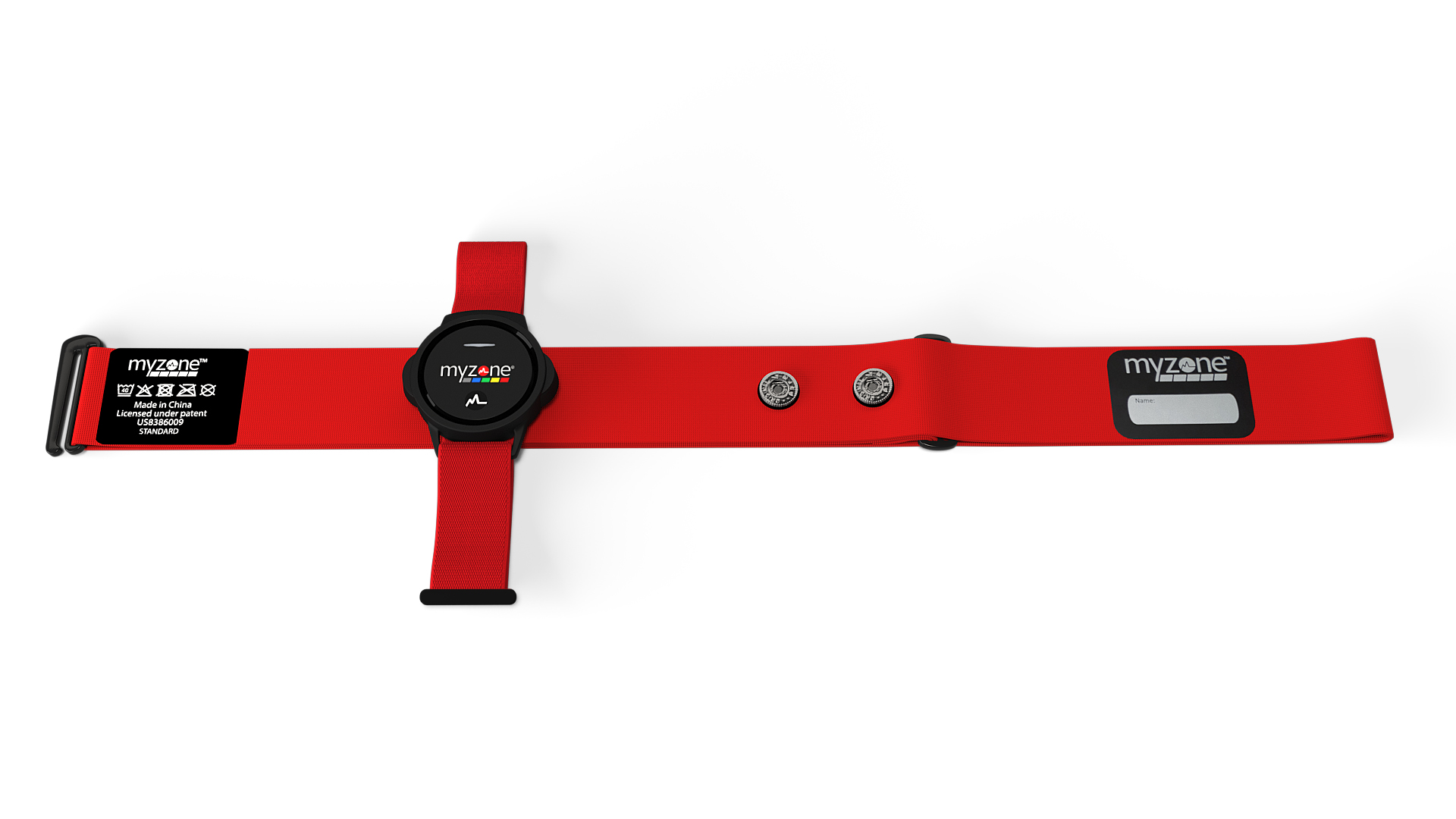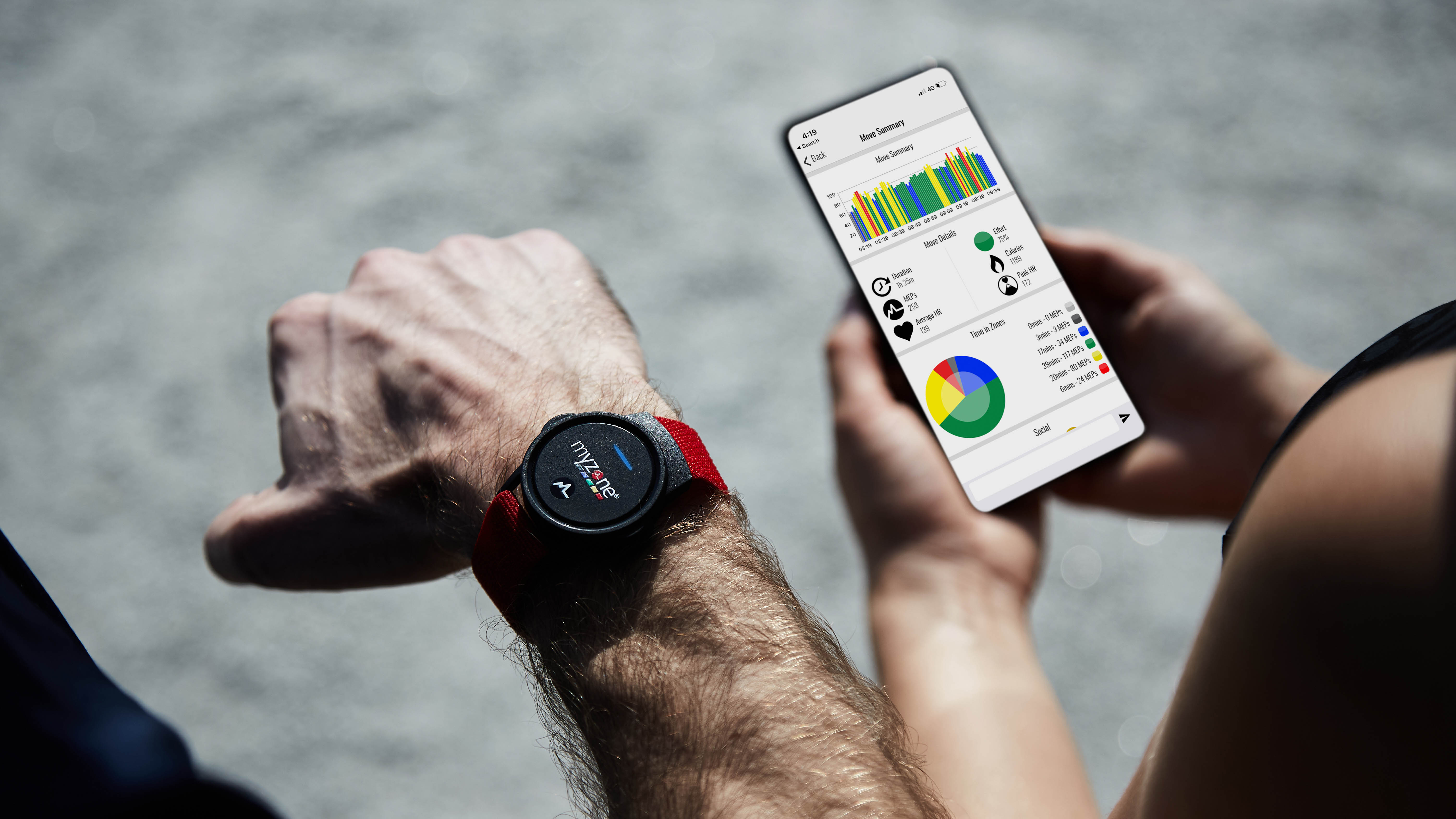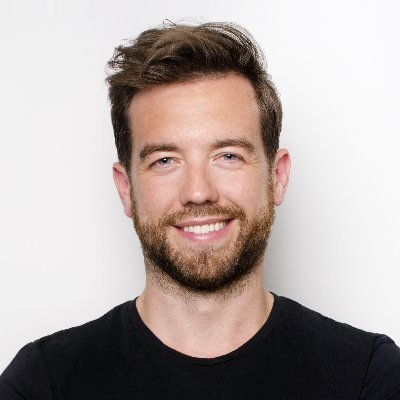Myzone MZ-Switch review: versatile heart rate monitor with a twist
The Myzone MZ-Switch rewards effort rather than fitness, providing a more motivating way to track your health goals


The MZ-Switch is versatile, clever and smart. It might not look all that sexy, but it delivers on its promises with some incredibly accurate fitness tracking no matter what activity you’re doing.
-
+
Accurate fitness tracking
-
+
Great battery life
-
+
Compact and lightweight
-
+
Easy to use
-
-
Feels a little cheap
Why you can trust T3
In this Myzone MZ-Switch review, we'll dissect and analyse MyZone's latest device, the "world's first interchangeable heart rate monitor". Arriving almost six years after the MZ-3, the new strap builds on its predecessor by offering a way more versatile heart rate monitoring setup. It can be switched up and worn in three different ways (hence the name), depending on what exercise you’re doing, to ensure it returns the most accurate heart rate data available.
What differentiates Myzone from other fitness-tracking platforms is that it monitors heart rate, calories, and time exercising and converts this data into something called Myzone Effort Points (MEPs). With a focus on rewarding effort rather than fitness, it results in a more equal playing field for all those taking part, no matter what their fitness level.
Is the MyZone MZ-Switch one of the best heart rate monitors? We got nice and sweaty to find out, and our feeling is the answer to that is, 'Yes indeed'. Let's get into the Zone.
MyZone MZ-Switch: Price and availability
The Myzone MZ-Switch was released in the UK on 24 March 2021 and is available to buy now for £139.99/$160 at MyZone. It comes with three different strap options depending on where you’d like to wear it (your wrist, forearm, or chest), plus a proprietary charging cable and storage pouch to keep it all safe in.
MyZone MZ-Switch review: Design
It’s clear that the MZ-Switch’s name derives from its versatility. It comprises a monitoring unit with a built-in optical heart rate sensor that clips onto any of three different-sized straps, each of which wraps around various body parts. This is quite an update to its predecessor, the MZ-3, which was only available as a chest strap.
These separate straps are about more than convenience. Each can be worn around either the wrist, forearm or chest, and is aimed at providing more accurate heart-rate measurements depending on the workout you’re doing. The idea behind this is to ensure that your movements don’t interfere with the sensors.
For example, when clipped into the wrist strap, the MZ-Switch will use its optical sensor and track exercises which involve repetitive arm movements, like running or swimming, whereas the forearm band is made for exercises like weight lifting or rowing. Finally, the chest strap, which wraps around the upper torso, makes use of its built-in ECG sensor that overrides the optical sensor as soon as it’s clipped in. This is designed for far more static yet intensive exercise where getting a highly accurate heart rate reading is more important, such as long-distance cycling.

Now that the MZ-Switch setup has been explained, let’s talk about the construction. One of the biggest letdowns in the MZ-3 was how cheap it felt. With the Switch, things are improved but not all that different. The heart rate monitoring unit is much more compact this time around, but it’s clear the focus is more on versatility than the build quality.
I noticed that the material construction of the forearm strap is different to the other bands, it’s stretchy due to its perforated design, but it doesn’t feel like it will stand the test of time - and it retains moisture for long periods after sweaty workouts.
Another unsatisfactory design feature we picked up on was the material of the chest strap, which is a fusion of two slightly different shades of red. On our review device, the section with the sensors was a slightly deeper red than that of the stretchy, adjustable end. This wasn’t the case on the MZ-3 and just cheapens the overall feel of it.
Still, this is aesthetic and doesn’t affect the performance of the band, so only a minor niggle in the grand scheme of things.
MyZone MZ-Switch review: Performance and the MyZone App
Like all heart rate monitoring straps, the Myzone MZ-3 doesn’t make use of an in-built display. Instead, your connected smartphone screen does this job, and so all the data you need to see during a workout will be displayed here via the Myzone app, which we have to say is pretty impressive.
The app is well-designed and ridiculously extensive in its feature set. Tap the ‘M’ logo in the bottom right, and you’ll be taken to a dashboard that neatly displays everything you need in the form of different-coloured tiles. Among these are workout mode, connections (basically, anyone you might know who is also on the platform), a chat function to talk to said connections, your body metrics and even a class-booking facility.
The latter is a brand new feature that allows you to connect and sweat along to pre-recorded workouts with other members in real time while monitoring your live fitness stats. There’s a great deal on offer here, and from what we tried, it all seemed to work really well - even if it does all take a while to get your head around.
During a workout, the Myzone app does an excellent job of displaying your data. It visualises how you’re doing in the form of different coloured bars, each of which depicts a different heart rate zone: blue, green, yellow and red. Each zone represents a percentage of your maximum heart rate, with blue being the lowest and red being the highest.

This is what makes Myzone’s tech unique. It works out what percentage of effort you're putting into each exercise as opposed to basing fitness output data on other popular standards, such as the estimated amount of the calories burned. The level of effort you put in is calculated from the heart rate zones and converted to MyZone Effort Points (MEPS), from 1-5, with blue earning you one point and red five points.
We love this method of fitness tracking as we believe it's way more effective than simply measuring the calories burned. Not only does it gamify fitness but by seeing your effort levels, it puts everyone on a level playing field, which we think is way more motivating - especially for those who are just starting out and find exercise intimidating.
The MZ-Switch worked an absolute treat during our entire time with it (apart from the never-drying forearm band). Another major positive is battery life. After a full charge, we hardly put a dent in the battery level indicator. This is because - when used as a chest strap monitor - the device is quoted to have a 3-6 month battery life between charges, which is pretty astonishing.
However, if you use the MZ-Switch on your wrist or forearm with the optical sensor, this battery life will drop to about 35 hours, so not much more than your average smartwatch. Still, it’s a pretty long time if you’re only using it for workouts. Whatsmore, it will store just over the same amount of workout data (36 hours) in its onboard memory, automatically syncing with your connected devices once they're back in range.
We should also note that the MZ-Switch can connect with various fitness platforms including Strava, MapMyRun, and Apple Health as well as a host of other fitness equipment, such as Peloton machines, via ANT+.

MyZone MZ-Switch review: Verdict
The Myzone MZ-Switch is a super versatile fitness companion that will deliver super accurate results during almost any workout. With exceptional battery life, a compact and lightweight design and an easy-to-use, feature-rich companion app, you can’t go far wrong here. Okay so it doesn’t look like it’s worth £140, nor is it the kind of device you’ll want to show off with pride due to its cheap-looking design, but it does the job it’s been designed to do very well, ensuring it’s ready for whatever sweat-inducing activity you throw at it.
MyZone MZ-Switch review: Also consider
The second generation Wahoo Tickr X has an integrated strap design that is slimmer and lighter than its predecessor, as well as being able to support more than one Bluetooth connection simultaneously. The Tickr X also added new ANT+ running dynamics to the sensor when paired with a compatible running watch. And offers all this for a very friendly price.
It might not be as versatile as the MZ-Switch, but the Polar Verity Sense is still a fantastically flexible, feature-rich and well-priced heart rate monitoring strap. It has a 20-hour battery life, three dedicated training modes, a wider Bluetooth range (compared to the Polar OH1) as well as being ability to measure heart rate when resting on your temples.
Sign up to the T3 newsletter for smarter living straight to your inbox
Get all the latest news, reviews, deals and buying guides on gorgeous tech, home and active products from the T3 experts
Lee Bell is a freelance journalist & copywriter specialising in technology, health, grooming and how the latest innovations are shaking up the lifestyle space. From national newspapers to specialist-interest magazines and digital titles, Lee has written for some of the world’s most respected publications during his 11 years as a journalist.
-
 Polar’s new subscription feature lands in the shadow of Garmin’s Connect+ rollout
Polar’s new subscription feature lands in the shadow of Garmin’s Connect+ rolloutPR genius or timing disaster? Polar’s new Fitness Programme adds adaptive training to its ecosystem
By Matt Kollat Published
-
 New Orient Star watches offer a glimpse of the magic within
New Orient Star watches offer a glimpse of the magic withinThere are two new skeleton pieces
By Sam Cross Published
-
 Netflix's most surprising 100%-rated sci-fi series returns with gorgeous trailer
Netflix's most surprising 100%-rated sci-fi series returns with gorgeous trailerLove Death + Robots is back for more
By Max Freeman-Mills Published
